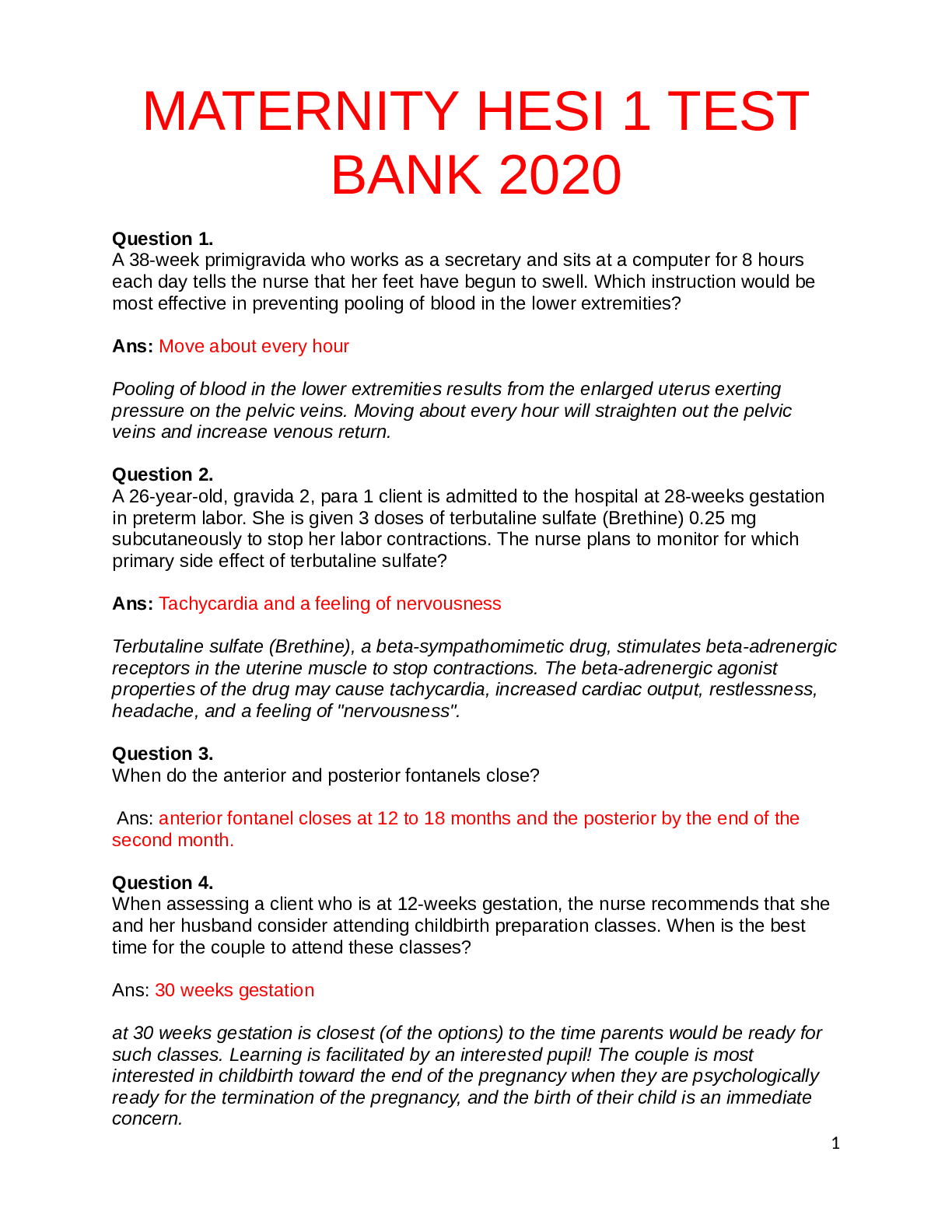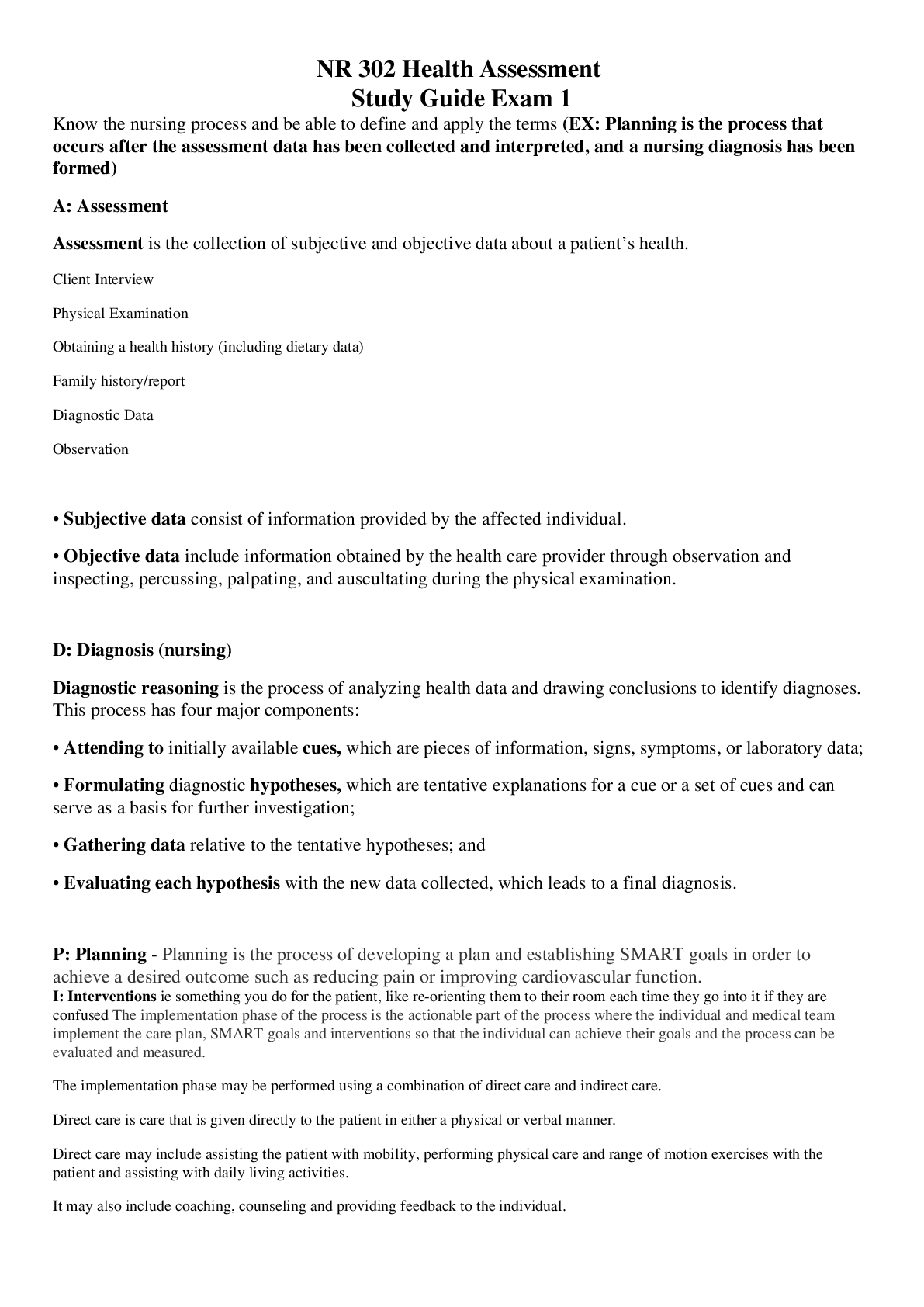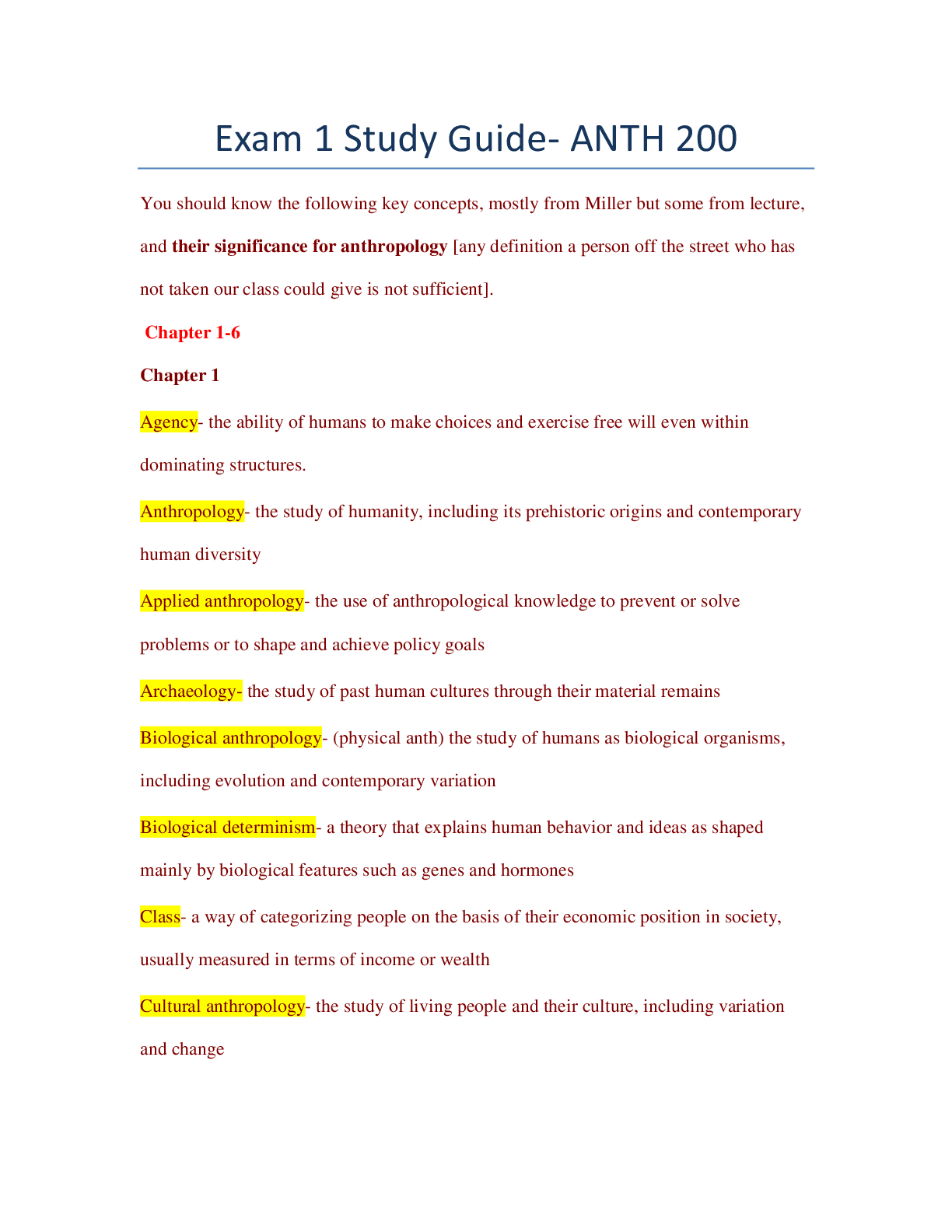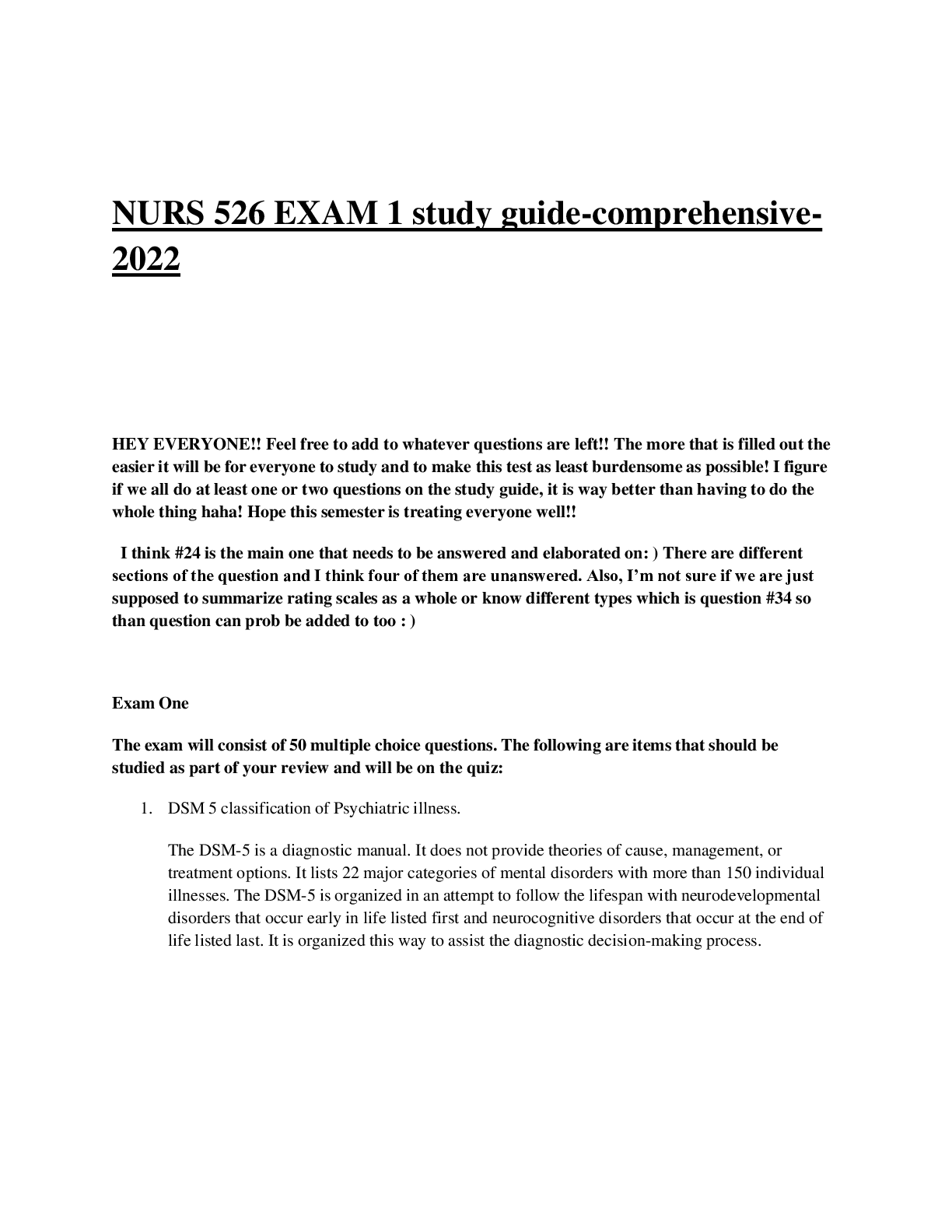*NURSING > STUDY GUIDE > NURS204 Exam 1 Study Guide (Includes all possible questions at the end) (All)
NURS204 Exam 1 Study Guide (Includes all possible questions at the end)
Document Content and Description Below
Resources: NURS204 7th Edition Textbook Study Guide: Unit 1: Foundations of Nursing Practice Chapter 1: Introduction to Nursing Key Concepts • Florence Nightingale elevated the status of nurs... ing to a respected occupation, improved the quality of nursing care, and founded modern nursing education (19th to 20th century) o Established the first training school for nurses, and wrote books about health care and nursing education. • Historical Perspective 16th Century o Theory of animism – supernatural aspects • Good spirits brought health; evil spirits brought sickness and death. • Roles of nurse and physician separate and distinct: physician as medicine man; nurse as caring mother. o Ancient Greek civilization • Temples became center of medical care. • Nurses cared for the sick in the home and community; practiced as nurse-midwives. o Early Christian period • Nursing has formal and more clearly defined role; deaconesses made visits to the sick. • Nursing developed purpose, direction, and leadership. o 16th century • Shift from a religious orientation to an emphasis on warfare, exploration, and expansion of knowledge • Nursing had a poor reputation; nurses received low pay and worked long hours in unfavorable conditions. • Historical Perspective 19th & 20th Century o Hospital schools organized to provide more easily controlled and less expensive staff for the hospital. o Female nurses were under the control of male hospital administrators and physicians. o World War II • Large numbers of women worked outside the home and became more independent and assertive. • Explosion in medicine and technology broadened the role of nurses. • Growth of nursing as a professional discipline. • The American Nurses Association (ANA) defines nursing as the protection, promotion, and optimization of health and abilities, prevention of illness and injury, alleviation of suffering through the diagnosis and treatment of human response, and advocacy in the care of individuals, families, communities and populations. o A profession focused on assisting people, families, and communities to attain, recover, and maintain optimum health and function from birth to old age. o Blend of science & art o Rated the most honest & ethical profession in USA 14 years straight o Largest of health professions & foundation of healthcare workforce • Nursing’s four broad aims are to promote health, prevent illness, restore health, and facilitate coping with disability or death. • To meet these aims, the nurse uses four blended competencies: cognitive, technical, interpersonal, and ethical/legal. More recently, these have been further specified as the Quality and Safety Education for Nursing (QSEN) competencies: patient-centered care, teamwork and collaboration, quality improvement, safety, evidence-based practice, and informatics. o Cognitive - Using critical thinking, a systematic way to form and shape one's thinking. o Technical - Manipulating equipment skillfully to produce desired outcome. o Interpersonal - Promoting the dignity and respect of patients and establishing relationships. o Ethical/Legal - Establishing a personal moral code and professional role responsibilities. • Nursing is recognized as a profession with a unique body of knowledge, service orientation, code of ethics, autonomy, and self-regulation. • Educational preparation for nursing practice involves several different types of programs that can lead to licensure as a registered nurse: diploma, associate degree, baccalaureate, and newer alternative routes including entry-level master’s programs, accelerated programs for graduates of non-nursing disciplines, community college--based baccalaureate programs, and RN completion programs for licensed practical nurses and other allied health providers. Graduate programs include master’s degrees, doctor of nursing practice (DNP), doctor of nursing science (DNSc), and PhDs. • NLN 10 Trends to Watch for Nursing Education o Changing demographics and increasing diversity o The technological explosion o Globalization of the world’s economy and society o The era of the educated consumer, alternative therapies, and genomic and palliative care o The shift to population-based care and the increasing complexity of patient care o The cost of health care and the challenge of managed care o The impact of health policy and regulation o The growing need for interdisciplinary education and collaborative practice o The current nursing shortage/opportunities for lifelong learning and workforce development o Significant advances in nursing science and research • Code of Ethics for Nurses o Guide interactions with patient’s, colleagues, and public o AACN’s 5 values of professional nurse: Altruism, autonomy, human dignity, integrity, social justice • Nursing controls and guarantees its practice through standards of practice, nurse practice acts and licensure, and the use of the nursing process. • Nursing process o One of the major guidelines for nursing practice o Helps nurses implement their roles o Integrates art and science of nursing o Allows nurses to use critical thinking and clinical reasoning o Defines the areas of care that are within the domain of nursing • Critical challenges to nursing practice in the 21st century include a growing population of hospitalized patients who are older and more acutely ill, increasing health care costs, and the need to stay current with rapid advances in medical knowledge and technology. • Early signs of fatigue in nursing profession o Compassion fatigue • loss of satisfaction from providing good patient care o Burnout • Cumulative state of frustration with the work environment that develops over a long time o Secondary traumatic stress • Feeling of despair caused by the transfer of emotion distress from a victim to a caregiver, which often develops suddenly • Healthy nurse o One who actively focuses on creating and maintaining a balance and synergy of physical, intellectual, emotional, social, spiritual, personal and professional wellbeing. o Healthy nurses live life to the fullest capacity. o Become role models, advocates, educators for their families, communities, and work environments, and ultimately for their patients • Each nurse must decide how to respond when compromised patient care has been identified. Nurses committed to healthier patients, quality care, reduced costs, and the personal satisfaction of knowing that they are actually making a difference versus merely wishing things were different value performance improvement. o Plans to either terminate, modify, or continue care plan • The prevalent culture of poor communication and collaboration among health professionals is significantly related to continued medical errors and staff turnover. • Quality-assurance programs are special programs that promote excellence in nursing. The ANA model quality-assurance program consists of seven steps: (1) identify values; (2) identify structure, process, and outcome standards and criteria; (3) measure the degree of attainment of criteria and standards; (4) make interpretations about strengths and weaknesses based on such measurements; (5) identify possible courses of action; (6) choose a course of action; and (7) take action. • Quality improvement consists of systematic and continuous actions that lead to measurable improvement in health care services and the health status of targeted patient groups. Four key principles of quality improvement are: (1) focus on systems and processes; (2) focus on patients; (3) focus on being part of the team; and (4) focus on use of the data. • An evaluative program that focuses on patient satisfaction is a powerful tool for patients and families who want to know what care will be like before choosing a health care facility. • Nursing-sensitive quality indicators identify structures of care and care processes that influence care outcome. The goals of the National Database of Nursing Quality Indicators (NDNQI) are to promote and facilitate the standardization of information submitted by hospitals across the United States on nursing quality and patient outcomes. • The cultivation of evaluation as a critical component of the nursing process helps ensure nursing’s continued success in achieving desired changes in patient health status. Nursing actions are far too valuable and costly to be haphazardly implemented. Evaluation that is carefully planned and executed can direct and redirect these actions to maximize the patient’s benefit. This is the outcome and challenge of nursing evaluation. Perhaps the most important question to reflect on is this: Are your patients and their families better for having had you share in the critical responsibility of partnering with them to evaluate the development and implementation of the care plan? [Show More]
Last updated: 1 year ago
Preview 1 out of 76 pages

Reviews( 0 )
Document information
Connected school, study & course
About the document
Uploaded On
Aug 05, 2021
Number of pages
76
Written in
Additional information
This document has been written for:
Uploaded
Aug 05, 2021
Downloads
0
Views
40


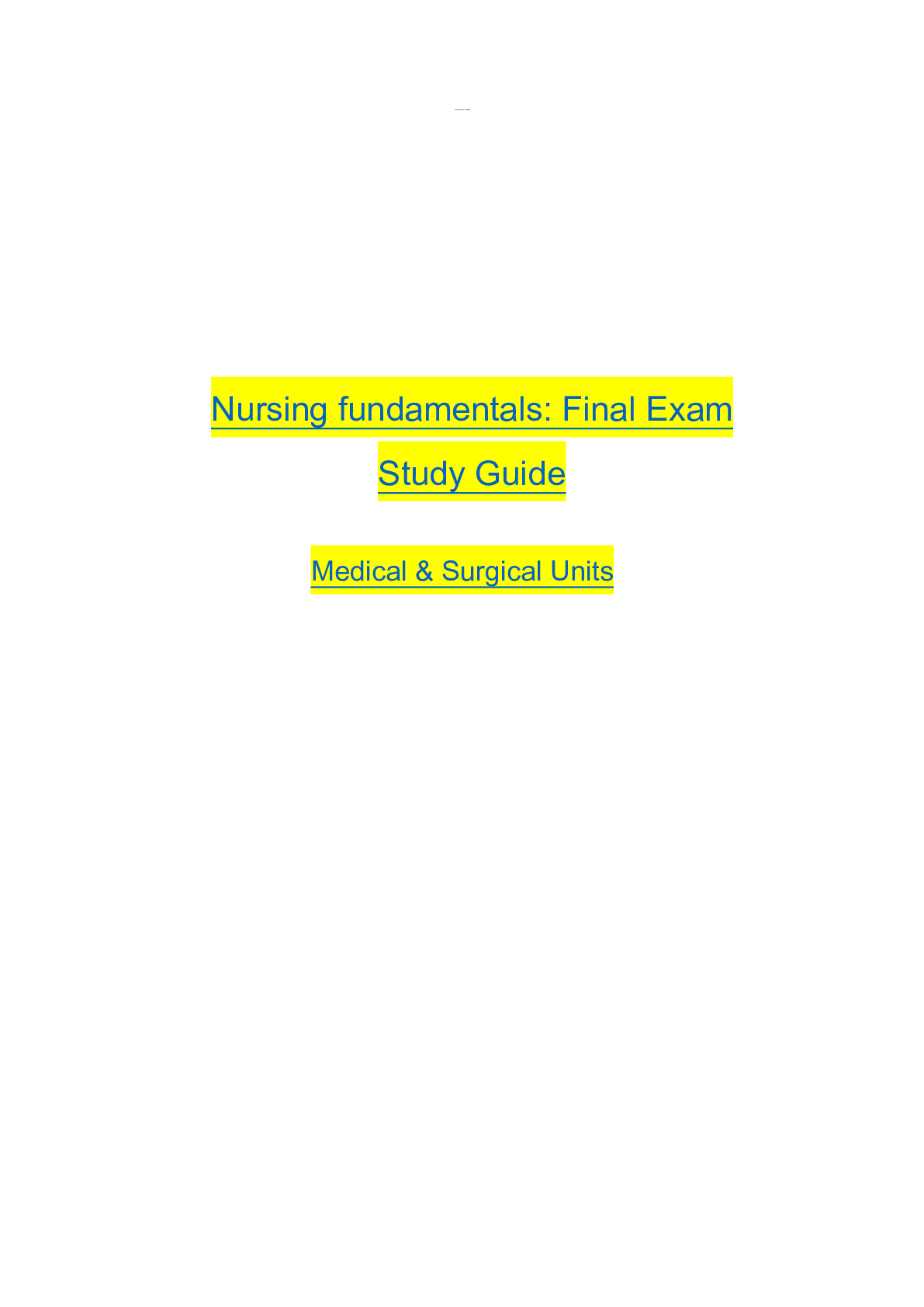
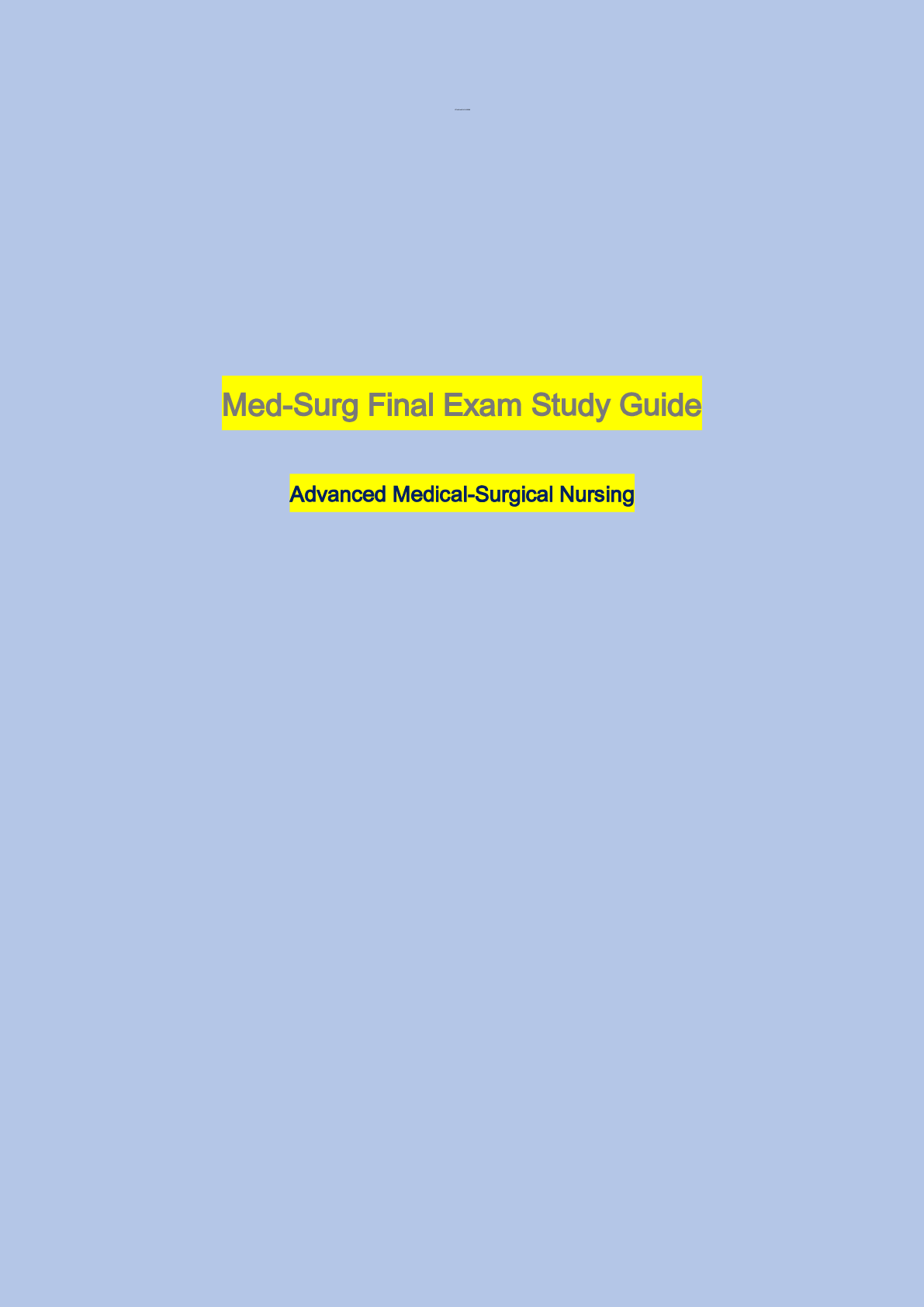
.png)
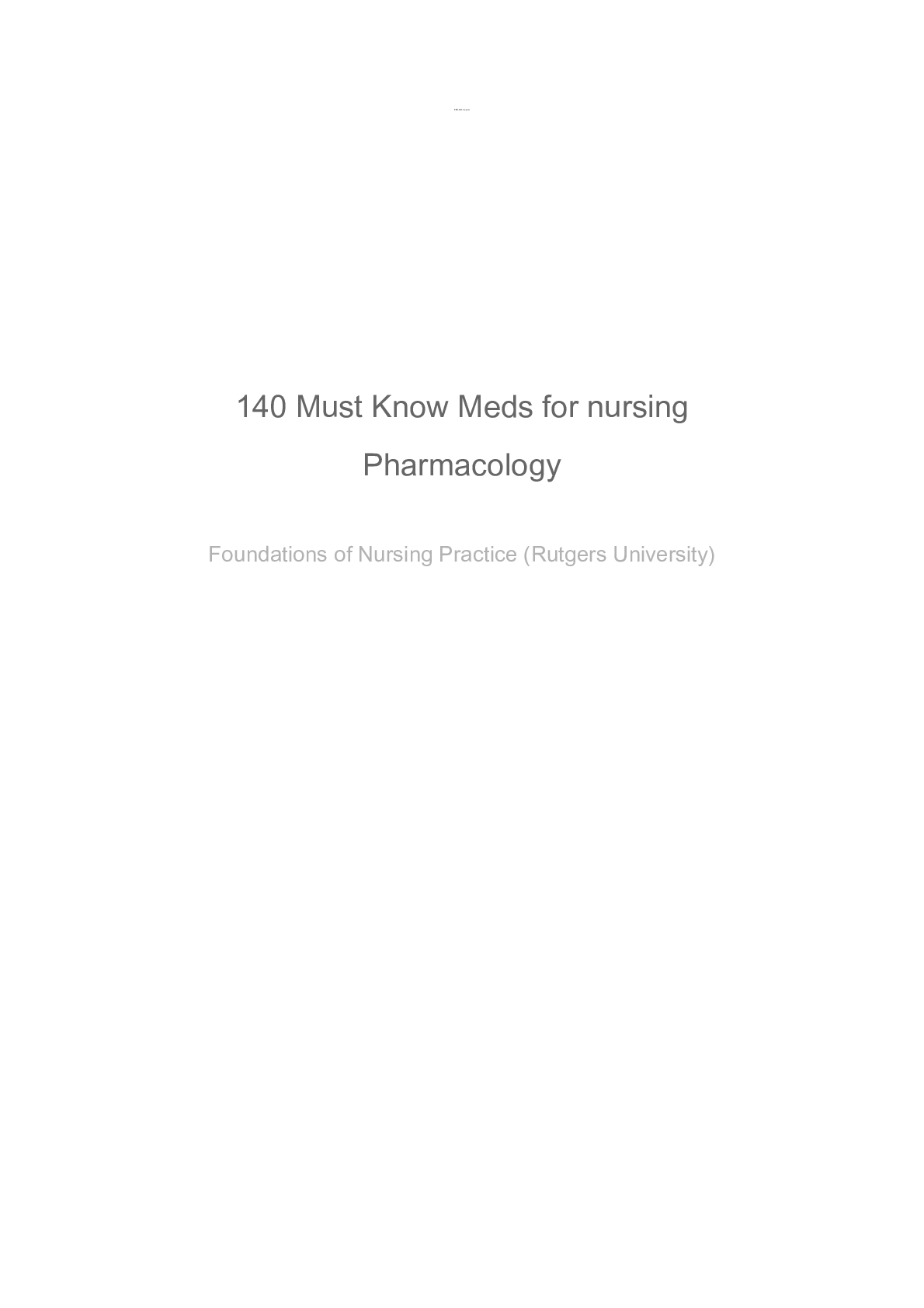
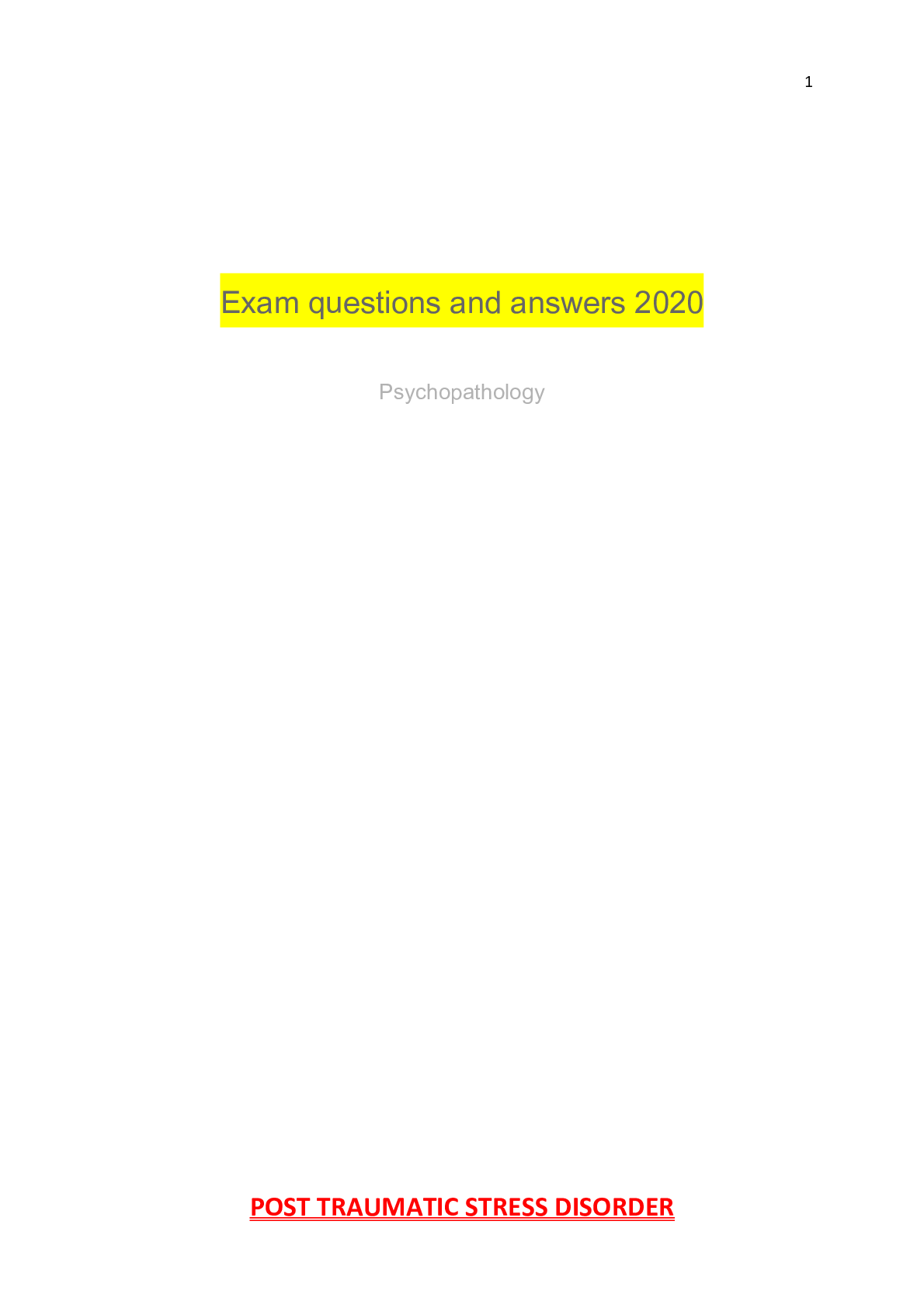


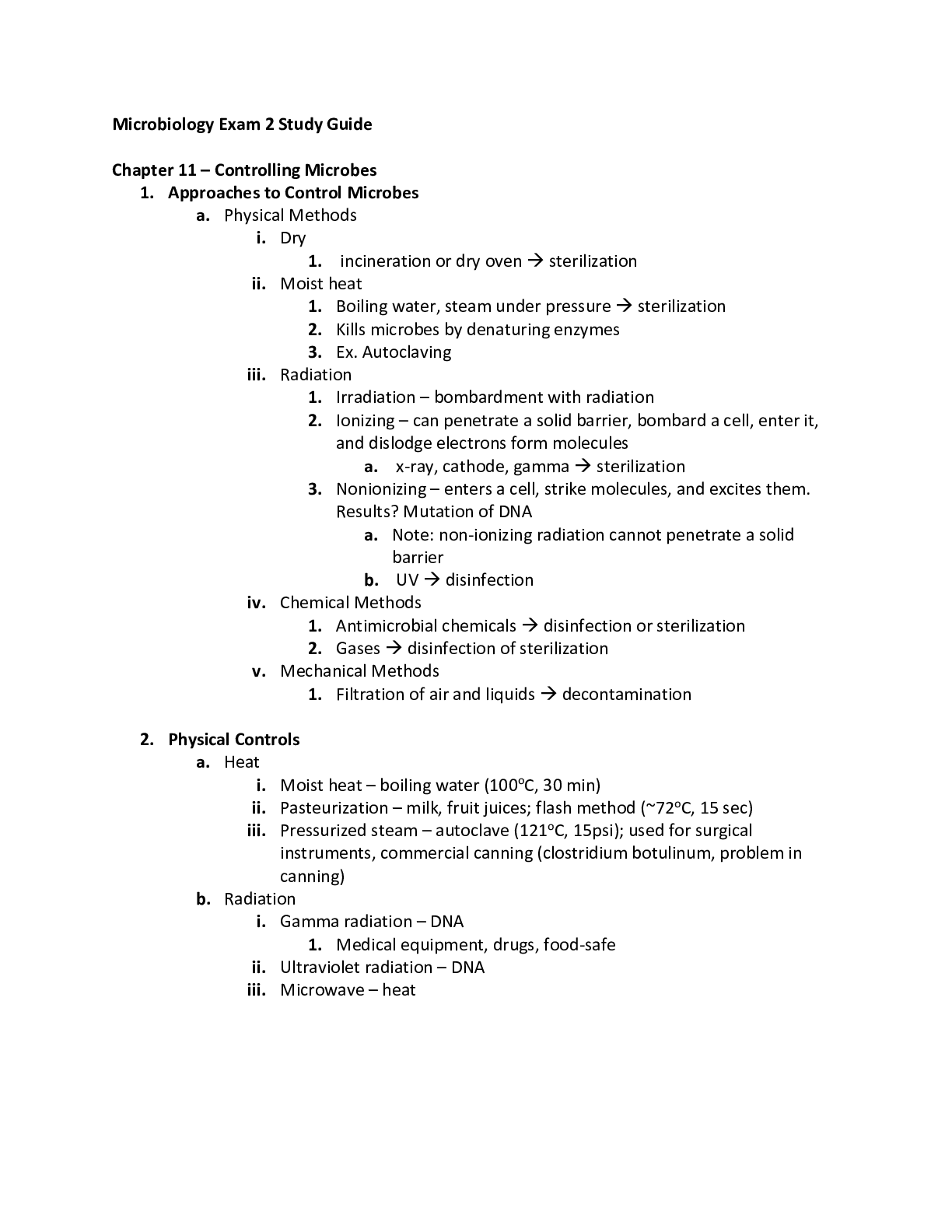
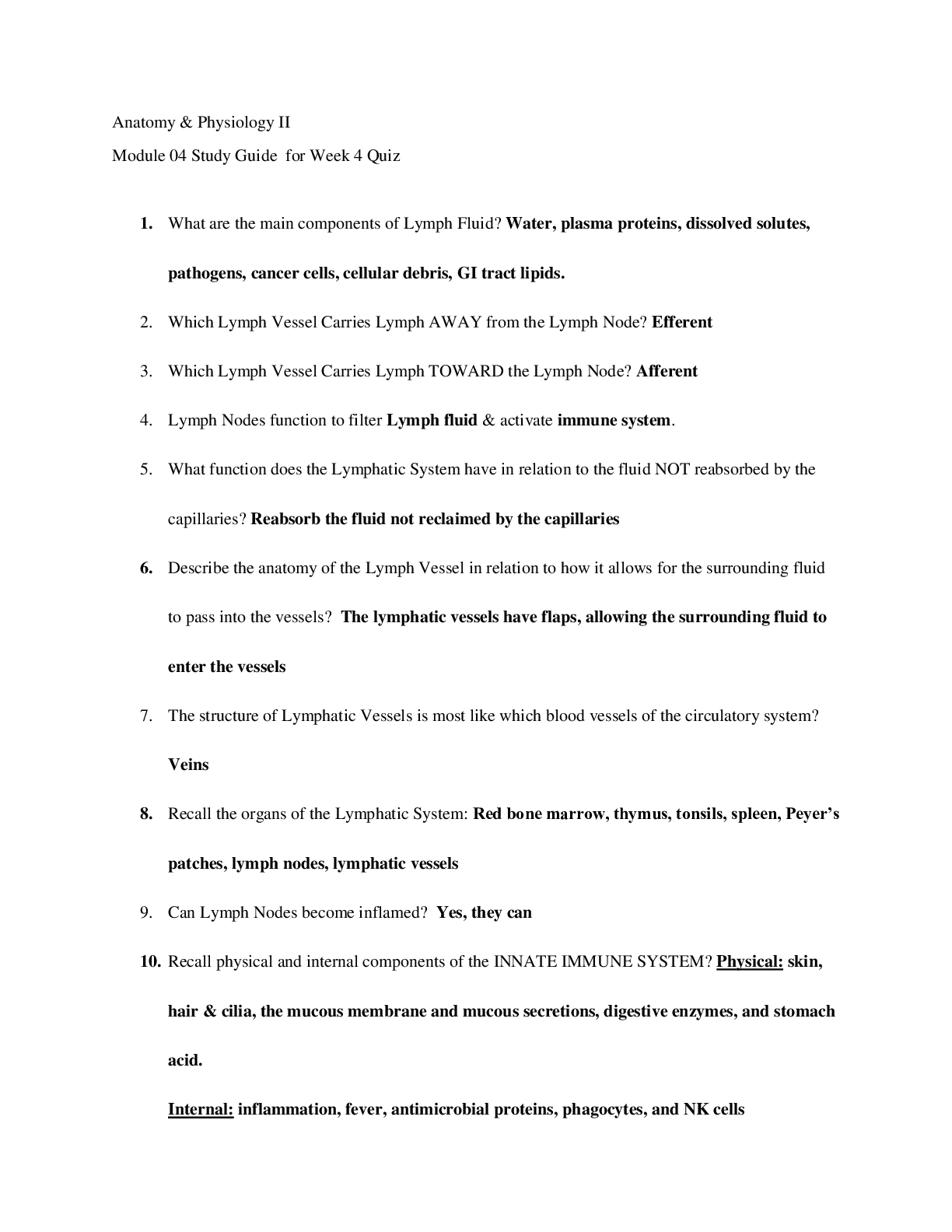

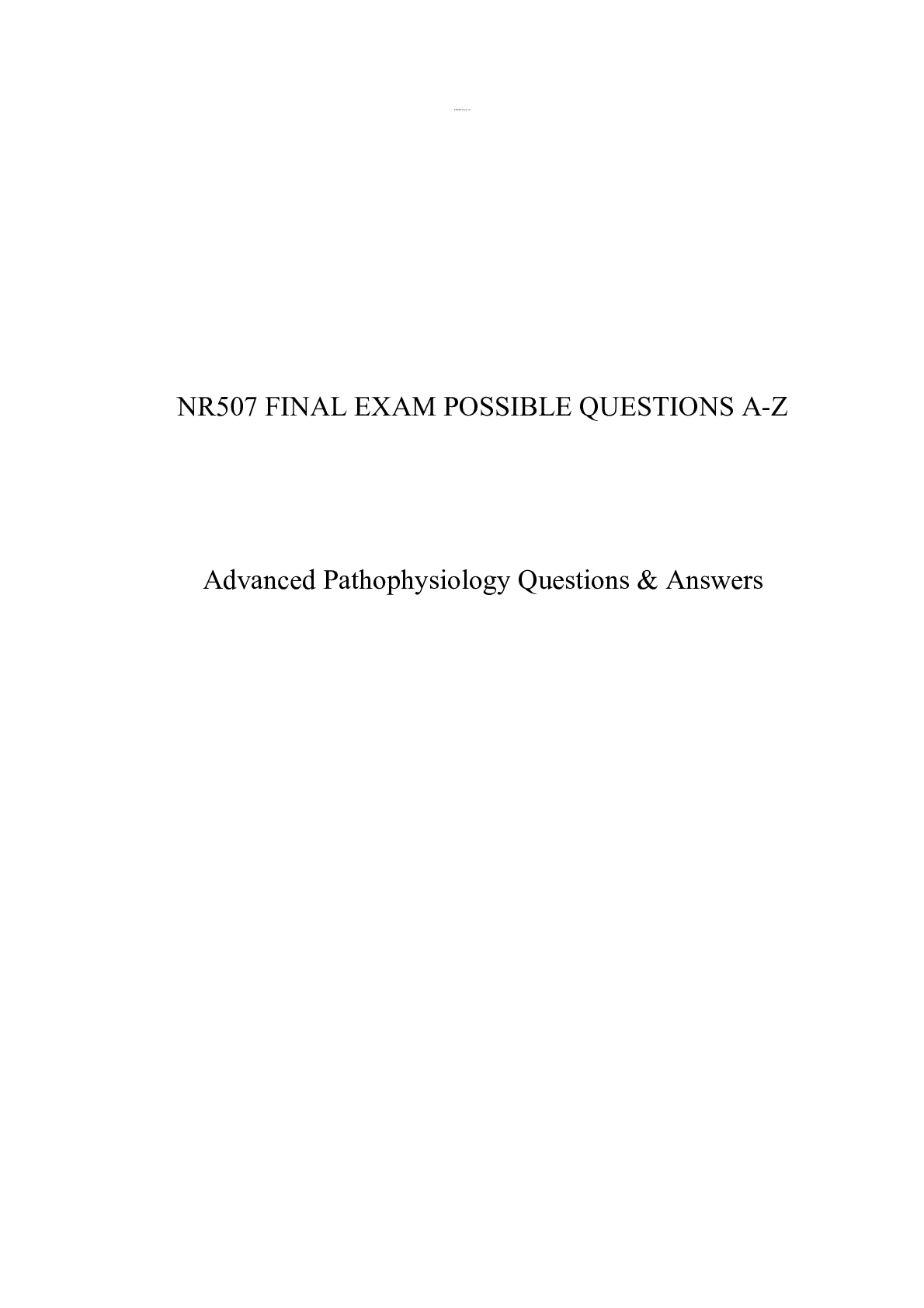
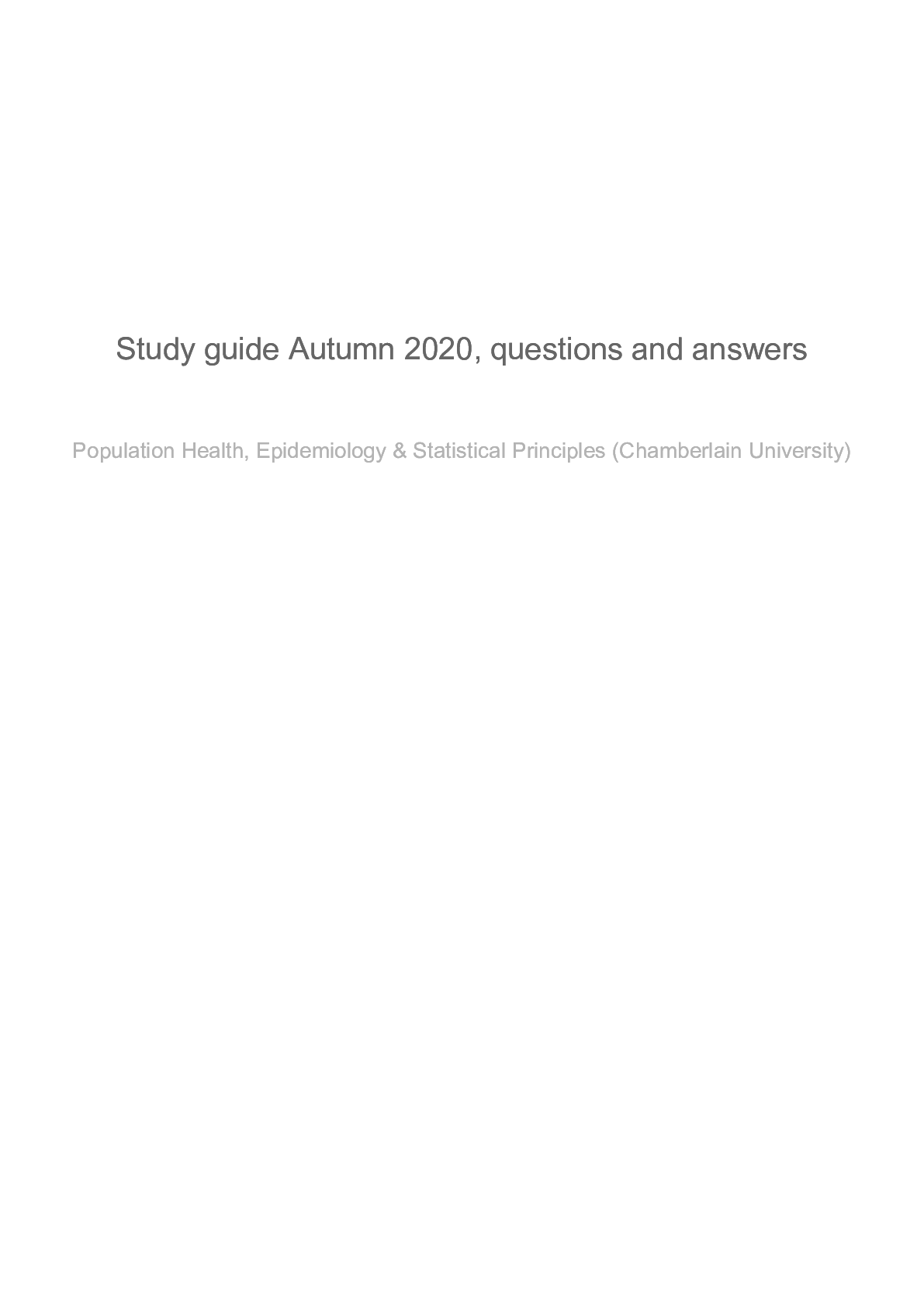


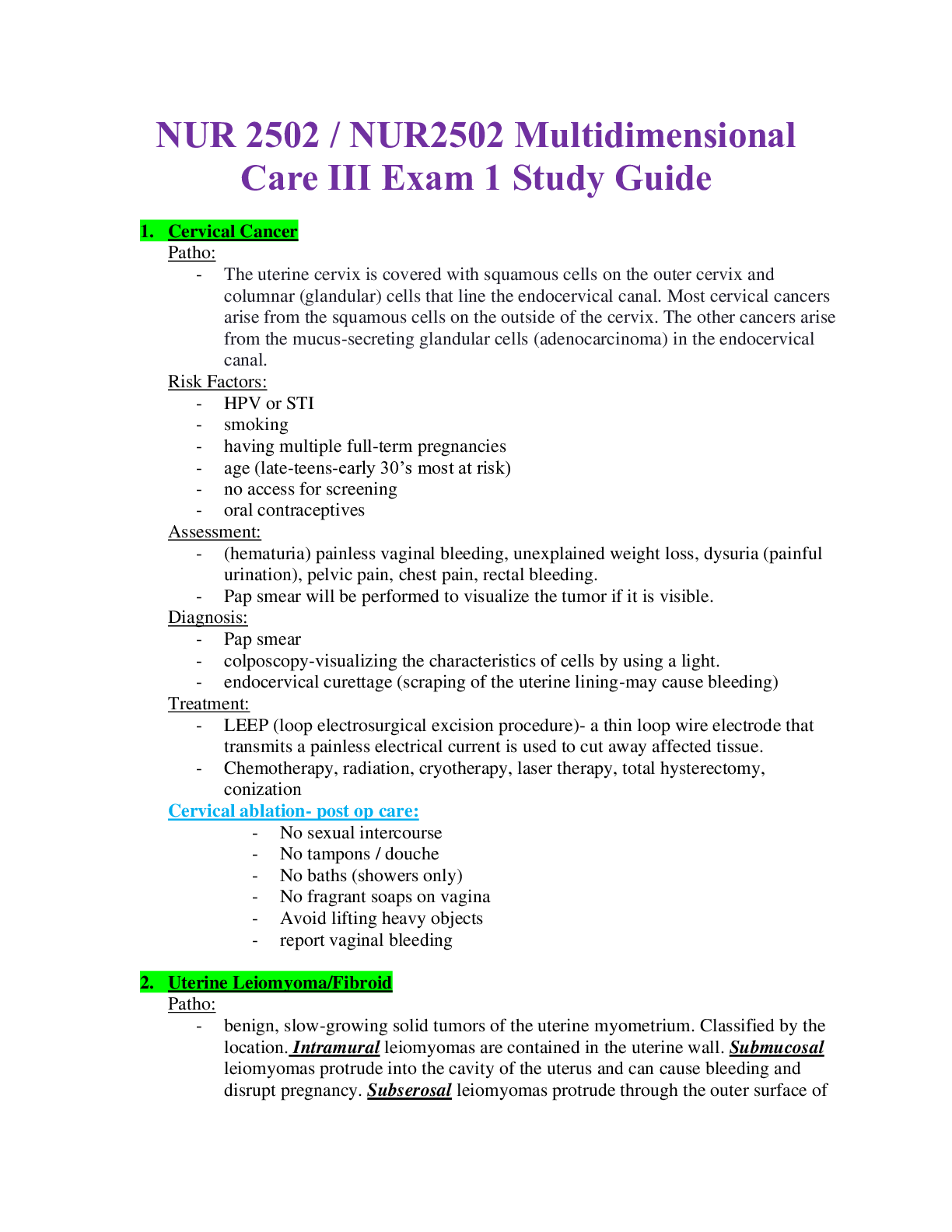

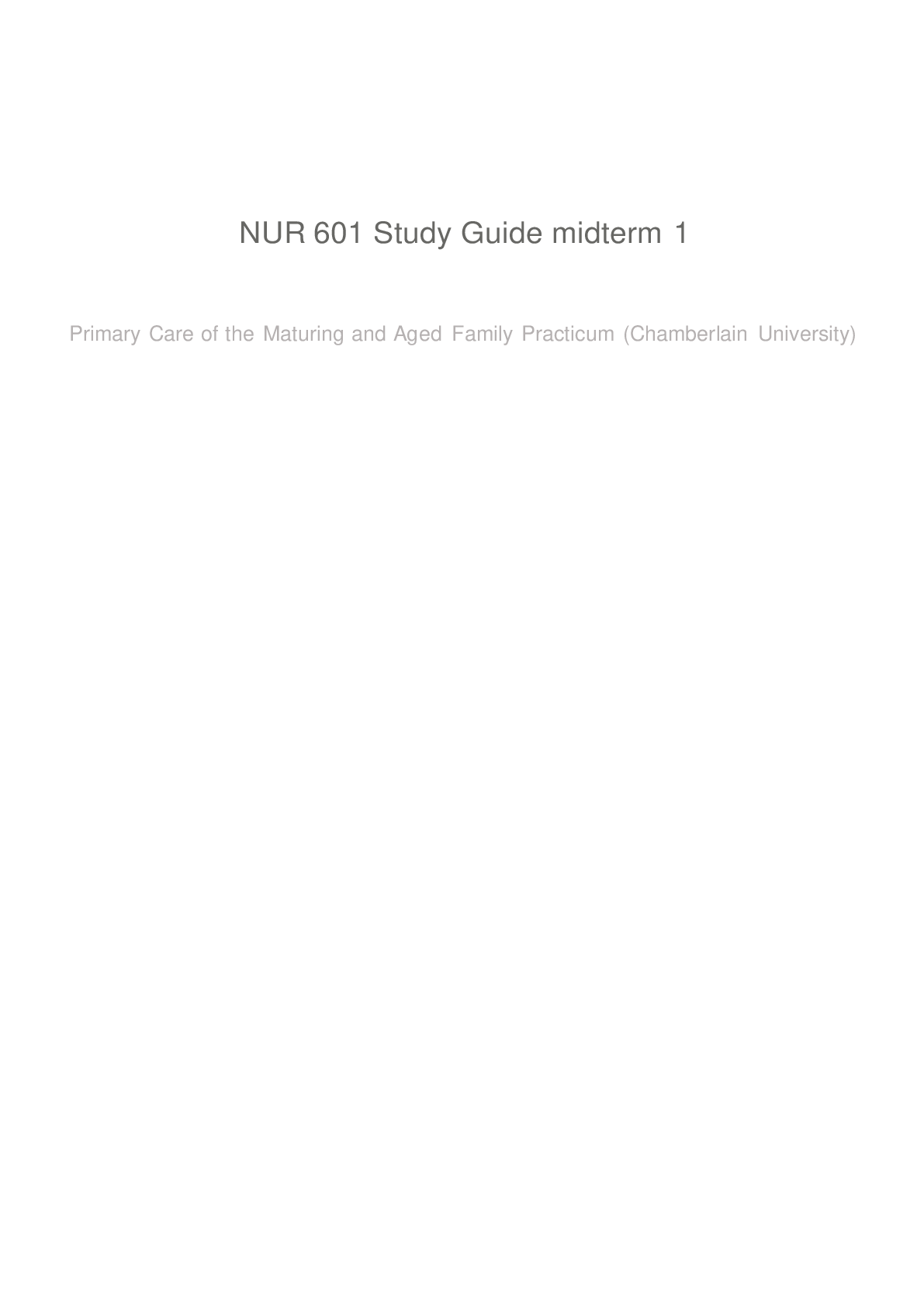
.png)
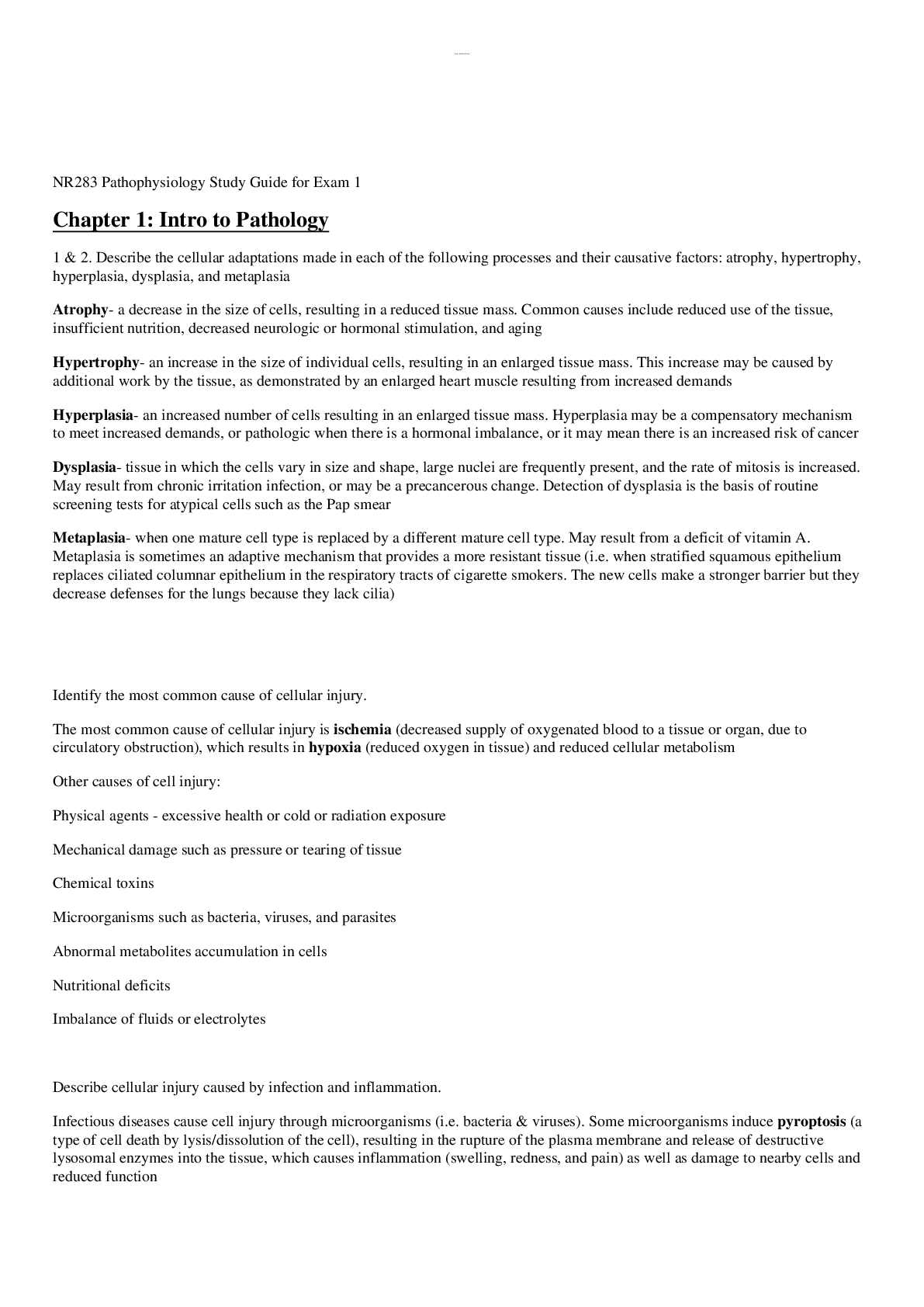
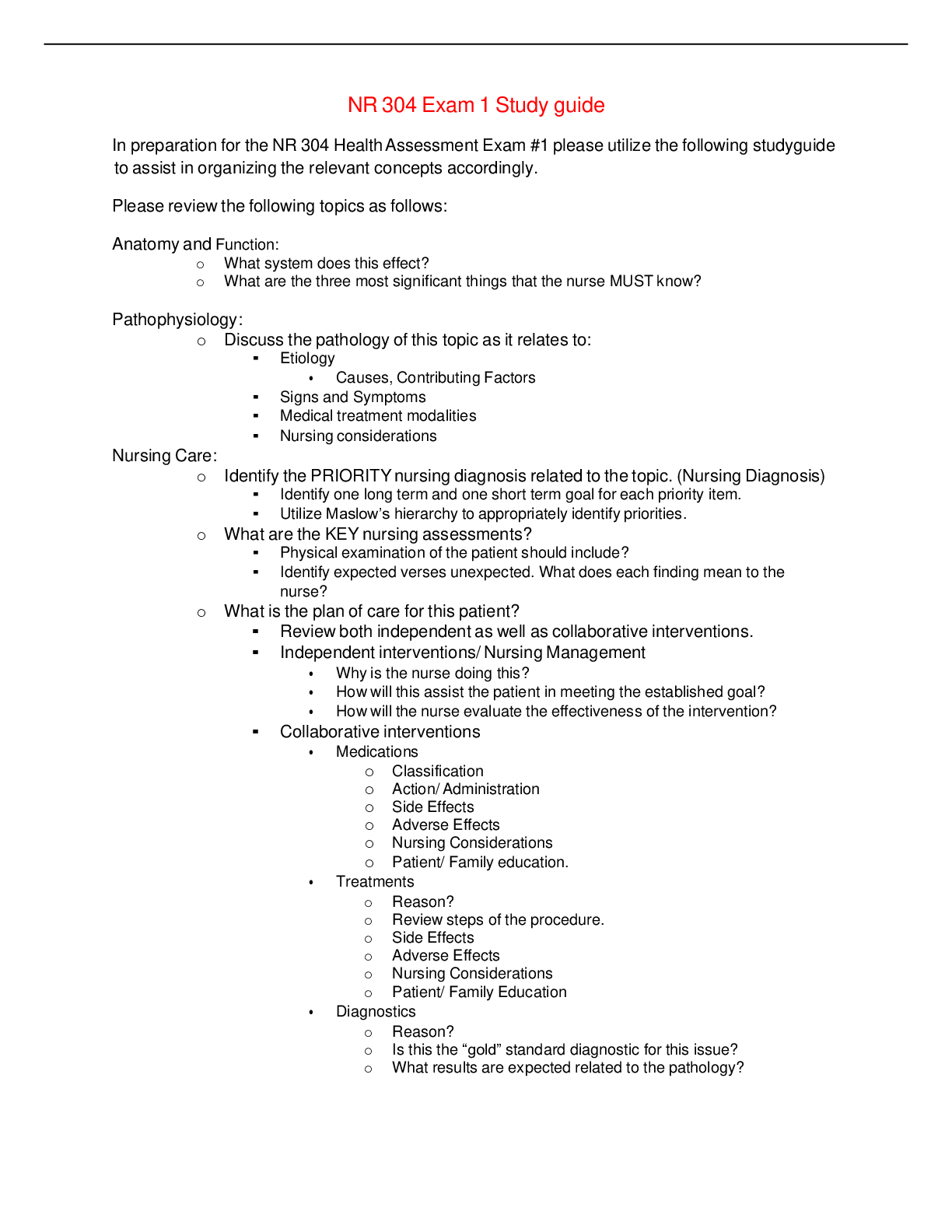
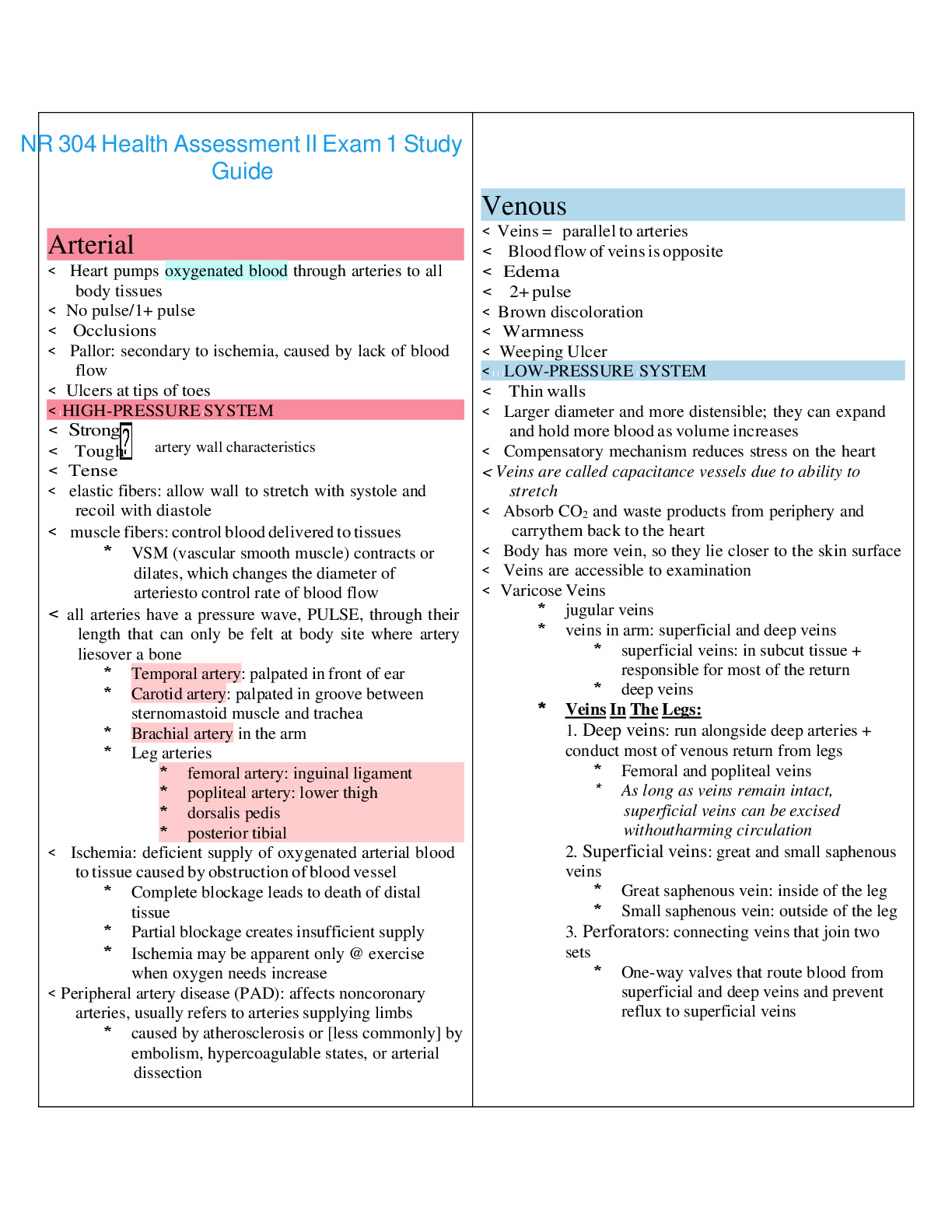
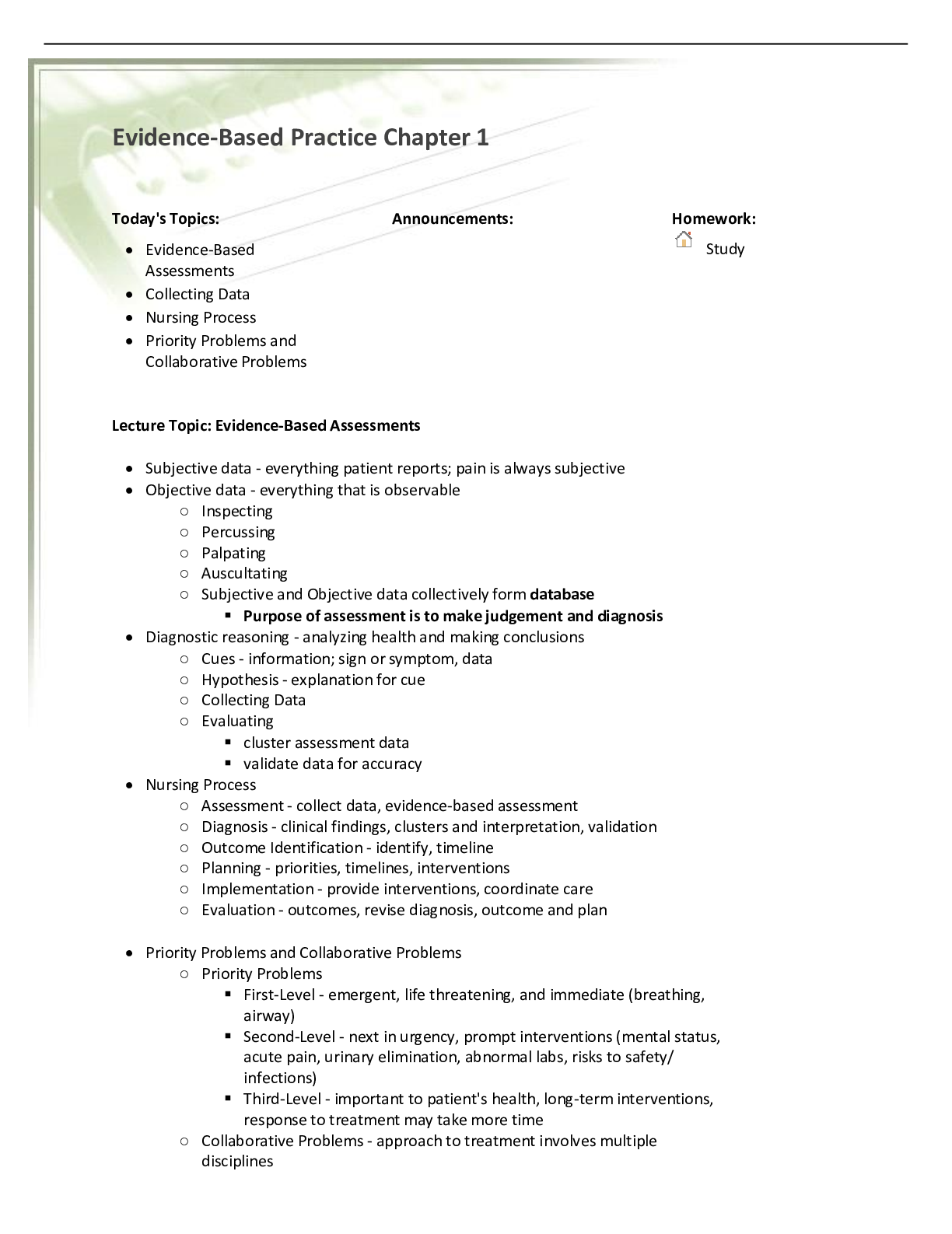

-3-168.png)
